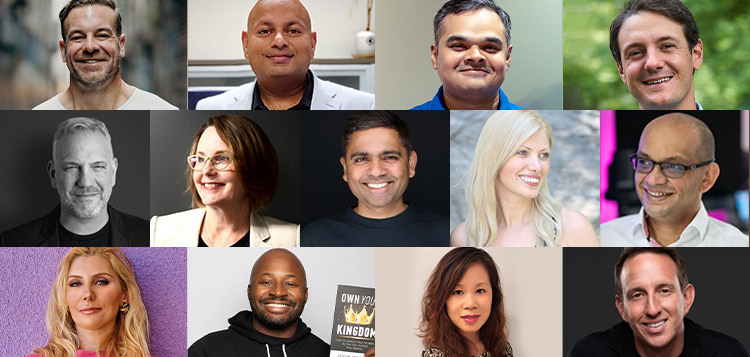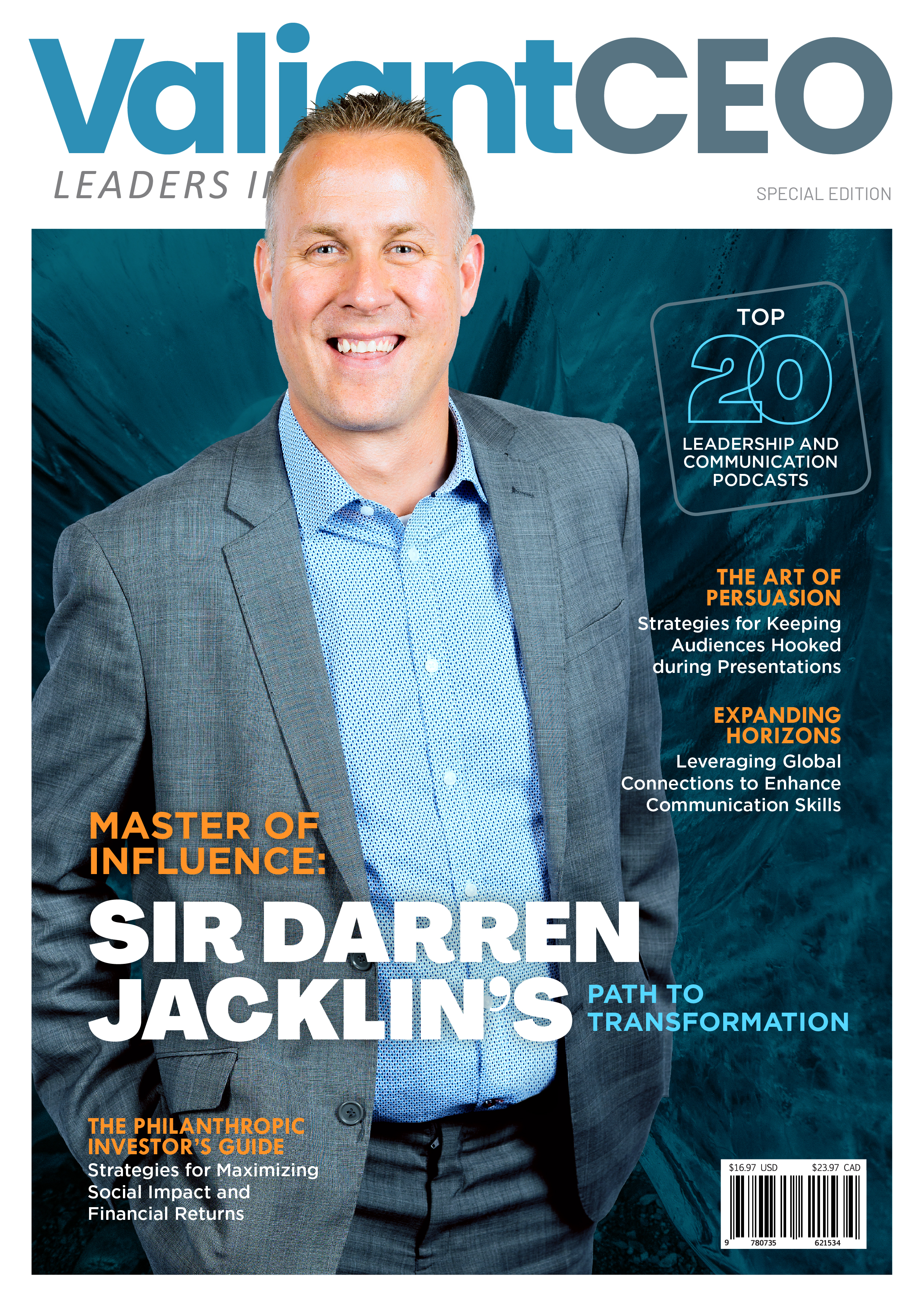In the relentless pursuit of business growth, CEOs and entrepreneurs are constantly seeking strategies that will set their ventures on a trajectory of success. Amidst the dynamic landscape of the modern business world, one key driver stands out: the power of media and publicity. The ability to harness this force can propel a company from obscurity to prominence, creating a ripple effect that touches every facet of the business.
In this article, we’ll delve into the invaluable insights provided by visionary CEOs and trailblazing entrepreneurs who have mastered the art of leveraging media and publicity to unlock unprecedented growth. Their experiences, strategies, and real-world lessons are a beacon for any business looking to thrive in today’s competitive marketplace.
Let’s explore the transformative impact of media and publicity on business growth and learn from those who have already illuminated the path to success.
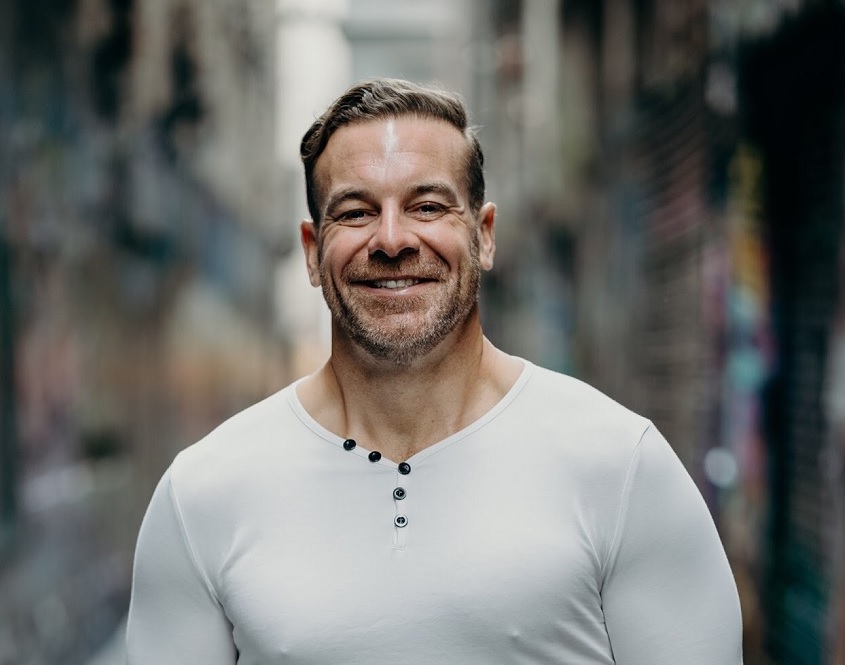
Bryan Clayton, CEO and Cofounder, GreenPal
You know, in today’s hyper-digital age, the power of media and publicity can’t be understated, especially for budding businesses.
Let me dive in and share what’s worked wonders for us at GreenPal.
Understanding Your Audience:
First, let’s understand the core. Who are you trying to reach?
For GreenPal, it’s homeowners who need lawn care services. We’ve tailored our media coverage and pitches to resonate with them directly.
Crafting A Compelling Narrative:
Most people don’t know this, but journalists receive hundreds of pitches a day. So, how do you stand out? By having a compelling story that resonates.
At GreenPal, our story revolves around simplifying lawn care and bridging the gap between homeowners and service professionals.
Leveraging Local Media:
Now for the other part of the story – never underestimate the power of local media.
Whether it’s a local news segment or newspaper, this has been invaluable for us.
In fact, GreenPal has been featured on local TV over 100 times! These appearances have been pivotal in letting communities know about our platform and the benefits we offer.
Build Relationships, Not Just Press Releases:
Let me explain. Instead of only sending out press releases when you have news, build genuine relationships with journalists and influencers in your industry. Offer insights, even when you don’t have news.
I’ve experimented with that approach, and the dividends it pays in terms of getting covered during important announcements are massive!
Feedback Loop:
Once you gain media coverage, use that feedback to refine your products, services, or offerings.
Listen to what people are saying and adjust accordingly.
Maximizing Publicity:
And as if that is not enough, once you get that media coverage, amplify it!
At GreenPal, we actively share our media spots on our social channels, embed them on our website, and use them in our email campaigns.
Engage and Respond: Lastly, engage with your audience.
When they comment on media articles or social posts related to the publicity, join in the conversation. It’s another opportunity to further the narrative and deepen brand connection.
In my experience, while chasing national headlines is great, often, it’s the consistent, smaller media engagements that collectively contribute the most to sustainable growth.
And let’s not forget, media coverage is more than just about business growth; it’s about building a brand legacy.

Vikas Kaushik, CEO, TechAhead
I understand the critical role that media and publicity play in encouraging business growth, especially in the technology industry, as the CEO of TechAhead, Vikas Kaushik, with over 24 years of experience. Using the media and publicity to their full potential could present our company with unmatched opportunities. TechAhead focuses on the following important insights to accelerate our business growth:
- Crafting a Compelling Story: We understand the value of an engaging story that connects with our target audience. We build an interesting brand story that draws in both media outlets and potential customers by displaying our creative approach to developing mobile apps, web solutions, e-commerce, and digital transformation.
- Building Thought Leadership: I have a strategic vision, a commitment to quality, and I am a leader in my field. By actively engaging in conferences, webinars, and penning thought-provoking articles, TechAhead makes use of this. Developing thought leadership improves the reputation of our brand and boosts media attention.
- Partnering with Influencers: We can expand our reach and establish credibility by working with technological gurus and influential members of the industry. These collaborations produce a win-win situation that attracts the interest of media outlets and a larger audience.
- Leveraging Digital Platforms: TechAhead effectively disseminates our successes and accomplishments by utilizing the possibilities of digital platforms. We expand our brand message to a global clientele using social media, press releases, and focused content marketing.
In the technology sector, TechAhead’s business growth is fueled by sticking to these findings and continuing to harness the power of media and publicity. Our commitment to providing distinctive mobile apps and cutting-edge solutions guarantees that we stay ahead in the quickly changing digital environment.
Finally, as CEO of TechAhead, I fully think that strategic media and PR coverage are essential to determining the direction of growth for our company. We have positioned ourselves as a trusted partner for digital transformation by continually amplifying our brand message, utilizing thought leadership, and exhibiting our client success stories, which have contributed to our ongoing success in the technology sector.

Babar Khan Javed, Director of Public Affairs, Z2C Limited
Since mid-2021, our C-suite executives have been quoted in Insider Intelligence, Forbes, Digiday, CMSwire, Fortune, and many more A-tier publications worldwide.
We have accomplished this by means of a newsroom strategy centered around earned media. This strategy involves leaders across Z2C Limited companies taking a firm position on various societal matters on behalf of the broader enterprise.
We have formulated a stakeholder economy framework that delineates target audiences, identifies crucial thematic areas, and classifies the most effective channels for dissemination, ensuring a methodical and comprehensive content development process.
Articulating your values and, more significantly, fostering engagement within a complex, multifaceted stakeholder environment is of utmost importance.
The corporate brand must be animated through consistent storytelling initiatives and an imaginative newsroom that enables your stakeholders to perceive the human aspect, voices, and impact your enterprise delivers.

Todd Saunders, CEO, FlooringStores
Publicity and media coverage boosts brand awareness, but it’s important to focus on generating positive publicity if you want to foster growth. One of the best ways to do this is to build mutually beneficial relationships with journalists who cover your industry. For example, if a journalist agrees to quote you in an article or feature you in an interview, sharing the link to that piece helps both of you gain additional exposure. You can also build your own positive publicity by encouraging customers to leave product reviews on your website, Google, and social media. Leveraging these reviews can help further bolster a positive image for your brand.
A business can leverage media or publicity to increase brand awareness by repurposing coverage. For example, highlighting a recent media appearance or feature in your site’s ads or across social media platforms increases your brand’s social proof. For example, our brand features media coverage on our blog, which allows our followers to view the coverage. This further establishes us as an expert on whichever topic we’ve discussed in the media coverage.
Repurposing media content can also earn you the respect and appreciation of the publication you’re highlighting, which helps to further that media relationship. Establishing your company as a reliable source of information in this manner can lead to future media exposure.

Anthony Romano, CEO, Laughlin Constable
Publicity is an important element of business growth. Being top of mind is crucial, as is being kept current on a business’ progress, successes, and team, for when referrals are requested or a need for services arises. We are lucky to have a full-service PR team as part of the agency’s client offerings and that group does a great job ensuring Laughlin Constable is providing thought leadership and insights on anything marketing-related as well as publicizing our agency news. The team also supports our clients, both B2C and B2B, with their publicity opportunities, securing national coverage from the major networks, talk shows, USA Today and NY Times to regional or trade attention. Whether through earned, owned, or influencer channels, publicity efforts breed talk value and interest to drive business growth, and we see it play out in search traffic, engagement, and queries.
We look to find newsworthy angles leveraging our work or team and package those to pitch to the media. For example, every year we create a holiday card for our clients. We know if we come at that tradition with an interesting creative edge or story-worthy approach, we can pitch the concept to trade media. Last year, our dark comedic video card made headlines in top marketing and advertising trades. Also, as we are experts in healthcare marketing, we annually conduct a national survey on healthcare topics and create an insight-heavy Pulse Report. We release that Pulse Report on our owned channels like social and e-news, as well as to health care media. The report and our strategy team’s insights are then highlighted before decision-makers within a key client category. A third strategy is partnering with our clients to share with the media and our communities the great work created. In February, we worked closely with our client ASPCA to strategically place and then announce the compelling broadcast ad campaign we created for the non-profit. The ad’s national debut was during the live broadcast of that canine competition that runs opposite the biggest game in football. Marketing and mainstream media of course have great interest in the best commercials of the big game, so we used that as an angle in generating publicity for our client and our work.
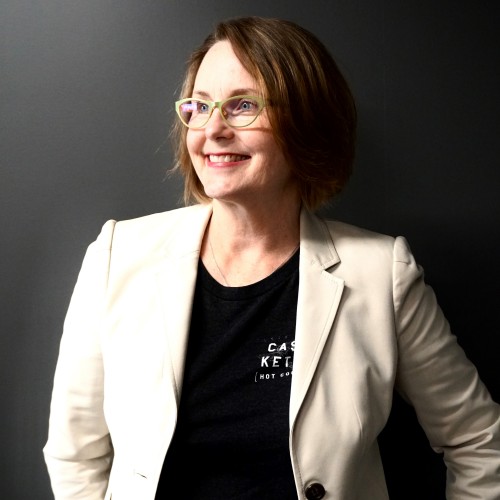
Lucinda Wright, Founder & CEO, Cask & Kettle
We are a consumer brand, so awareness and staying top-of-mind are critical to our success. It helps drive more customers to buy our product and establishes the credibility we need to foster strong relationships with retailers. We consistently mix PR, advertising, and digital marketing to stay current in buyers’ minds. In my opinion, you can turn the volume of this activity up or down based on the market, but you can’t stop doing any of it or use just one tool. All three need to be in play to get the right kind of storytelling presence you need.
The easiest way is by posting it on social media. Many of the articles have a long shelf life so we can post the links with interesting context a number of times. In our case, recipes and suggestions can get shared at other times of the year. Or, we can talk about how we’d modify this Thanksgiving recipe for a summer BBQ, as an example. Usually, the PR posts do a bit better than our more brand-focused posts – probably because they include a third party – it’s not just us talking about our product.
We’ve actually used a mix of sponsored and paid placements to hit certain goals. For us, as a traditionally warm cocktail, the holidays are important. We work with the media to educate buyers on how to use our cocktails for entertaining and gift-giving during Thanksgiving, Christmas, Mother’s Day and Father’s Day. We target publications a bit more during those times knowing that gifting guides are being curated and we use the results on social media as proof points for credibility with distributors and partners. It’s important to remember that the media is the strongest way to build third-party credibility. You can’t create it with advertising, you can only reinforce your messaging. Ads remind shoppers you’re still around and keep your brand top-of-mind. The actions of other people – influencers, bloggers, and reporters are needed to *create* a perception. So, if you’re just starting out it’s critical that you focus on targeted PR so that you have assets to utilize as you scale into other tools.

Ashu Dubey, Founder & CEO, Gleen
Media placements are essential to business growth, especially in a nascent industry like generative AI. If you look at examples, many major tech businesses exploded in popularity and revenue after a few well-timed media articles. For Gleen, it is about showcasing our product to the world and demonstrating leadership in the customer success chatbot vertical that has helped the most. Being a leader in any industry requires thought leadership and press coverage.
When we receive media coverage, one of the best ways to increase brand awareness is to cover it in our own blog and then post it to our social media channels. One of the most recent examples of this was a new article featuring our CTO on CMSWire. It has been shared across LinkedIn and has resulted in several inquiries about our generative AI-based chatbot.

Esther Kiss, CEO, Born to Influence
Here’s how to get the most out of your publicity/media appearances.
When you do media interviews, be strategic about the content you share.
Make sure it has a good balance of stories and how-to information. It should all build up to where the next logical step for the audience is to take you up on your freebie. Seed your freebie throughout.
Be subtle – no links, but refer to the free content on your site from time to time and invite them to get the actual freebie at the end.
Announce on social that you’re about to jump on the call to do the interview before you do it and/or after, and post a little blurb about what was fun about it.
If you are getting on TV, announce it ahead of time and ask ppl in that city to tune in.
Give the theme, the name of the channel, and the time the interview will air if it’s live. If it’s pre-recorded, share the clip once it’s been posted.
Once the interview is published, make sure to share it on social multiple times, because most people don’t see your actual page, just a small fraction of your posts through their newsfeed.
So share it on all the platforms that you’re active on, at least a handful of times (a few days/weeks apart).
Also, you can include it in your email newsletter, and autoresponder series.
If you have a media page on your website, featuring your interviews, put it up there as well. (Feel free to check out the media page on my site if you want to see an example)
And, if you are running FB ads, be sure to use the video clip as content either for your retargeting or top-of-funnel ads.
We’ve seen lead costs go down by as much as 90% when you use your Entrepreneur, Forbes, etc articles as ads in your retargeting campaigns.
If you’re looking to get speaking gigs, this clip will help you with getting the attention of conference organizers too.
And, you can always use your existing media interviews to get MORE media, when you link to your original clip in your next pitch.
If you do sales calls, one-on-one consultations, or strategy sessions, you can include this TV clip in your materials that you send to prospects ahead of time, as a conversation starter and to warm them up to you.
Also, make sure to use the TV station’s logo on your “as seen on…” section on your site and in your marketing materials.
Also, when you’re done with the interview, ask the podcaster, or the TV producer how they feel and strike up a conversation to set up further interview opportunities.
With podcasters and other online media, you can ask for referrals and introductions to ppl who have similar audiences.
With TV and radio producers, once they acknowledged that the interview went well, mention that you have a few more story ideas that’d be great for their audience. If they have time to hear you out right there, pitch it there.
More often than not, it’s easier to get them to say yes to an email follow-up. If that’s the case, share the interview on social, then email them to thank them for their time and say “As promised, here are a few more story ideas that would be helpful for your audience” – and pitch yourself for more interview opportunities on the same show.
Remember, the rule of thumb with media is: the more media you get, the more media you get.

Peter Boolkah, Business Coach at Forbes
Many business owners will be feeling the real cost implications of an unstable economy. What is important is to look at where to make savings in your business and where to spend to find your consumers or service users. The place to spend is on marketing. Social media, both organic and paid for is a great place to start. Always ensure you have someone who is trained in social media to take this on. Decide which platform your audience uses and focus on it. Content is key so make sure that you are utilising video, audio and images. Pay close attention to your website as it is your shop front. Make sure that the words are search engine optimised so that your website ranks highly in Google searches. Write blogs and ensure they are also optimised for search engines. Again make sure you have an expert handling this as it is not as simple as it seems. Another important form of marketing is PR. Ensuring your business is in the press can be helpful in building your reputation and visibility. As long as your service or product is good then being visible to your marketplace will ultimately grow your business and set you apart from your competitors.
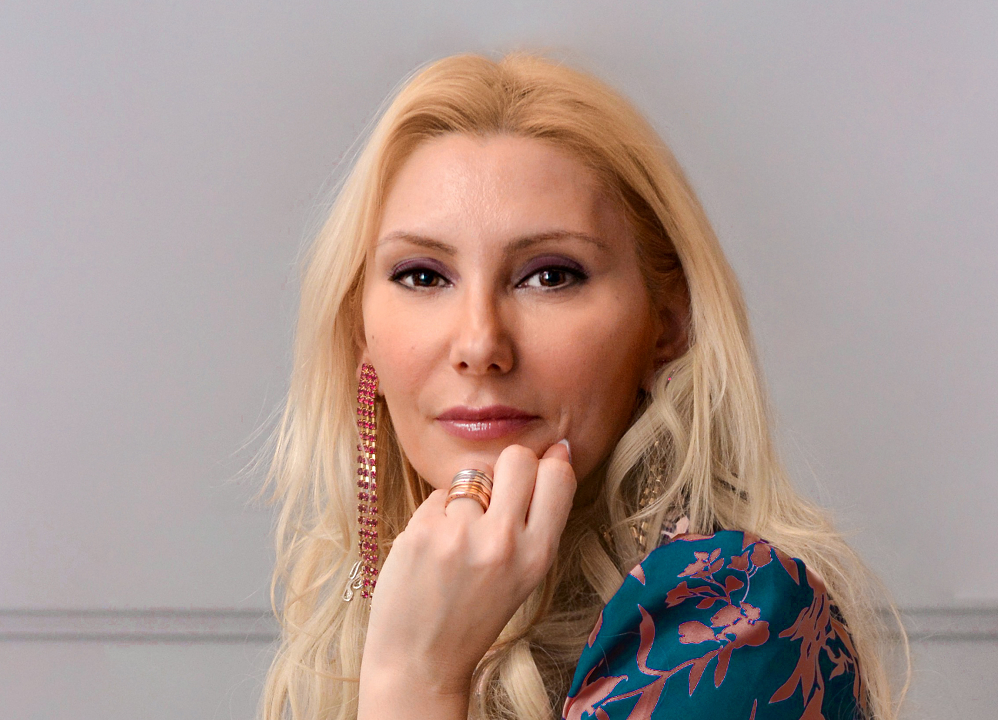
Anna Stella, Founder, BBSA
Successful strategies on how a business can leverage media or publicity to increase brand awareness
A. Walk the talk and show it off.
Everyone, whether a business or an entrepreneur, desires a good reputation because it can determine success. A company with a well-built image has a longer-lasting impact on its audiences, and showcasing a reputable and strong business image is crucial for business growth.
B. Hire an expert to build lasting relationships with the media.
Let’s be honest– creating positive relationships with your industry’s media professionals require skills, time, and commitment. For small businesses, it’s very challenging to do so in-house. You will gain more benefits by hiring a PR expert.
C. Use media to publicize business values.
Businesses can use media to showcase their business values. Communicating your brand values is essential because customers now prefer to support a company that aligns with their values. Reports show that clients who relate and identify with your values will likely purchase from you repeatedly. Whenever appropriate and possible, it’s also good to collaborate with other brands and notable people, such as influencers and celebrities, who will help you enhance your business’s positive image and values to attract the target audience’s attention.
D. Align your social media presence.
PR and social media can boost your business and expand its reach significantly. People use social media as a search engine; therefore, being present and ready to educate and inform your target customers is highly beneficial.
Examples of how we leverage publicity or media
A. We incorporate logos of places we have been featured on our website and social media profiles. We strive to create intriguing visual ads and bring traffic to our social media pages, blogs, and websites.
B. We then integrate PR features into all elements and aspects of our marketing strategy.
C. To keep our customers engaged, we found it rewarding to leverage the credibility of the publications where we were featured and integrate them into our funnels.
D. We also tag different publications we work with on social media posts. Showing gratitude goes a long way considering the hard work that journalists put into compiling their content.
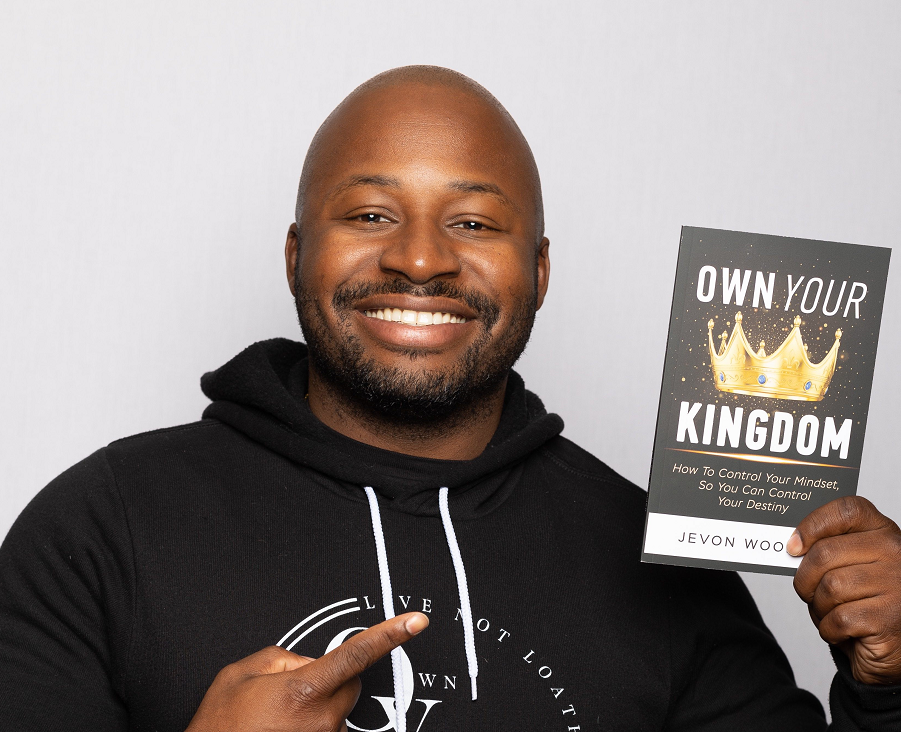
Jevon Wooden, CEO, BrightMind Consulting Group
Increasing brand awareness through media and publicity hinges on one fundamental principle: strategic storytelling. A business must frame its narrative in a compelling, relatable, and genuine manner. This narrative can be as broad as your mission statement or as specific as a new product feature, but it must always resonate with your target audience. Look at Apple, for instance. By consistently tying their brand narrative to innovation and sleek design, they’ve built an image their audience can connect with, admire, and evangelize.
However, crafting a compelling narrative is only the first step. The next step is deciding on the optimal platform to share your story. Consider the audience demographic each media platform caters to and match that with your target demographic.
If your audience is predominantly young adults, you should utilize social media platforms like Instagram or TikTok. Alternatively, consider LinkedIn or publications like Forbes or the Wall Street Journal if your target audience is primarily professionals.
In my company, BrightMind Consulting Group, we’ve employed several strategies to leverage media and publicity. First, we’ve established ourselves as thought leaders in our field. We’ve done this by writing insightful articles and blogs on our website and third-party platforms, contributing to podcasts, and speaking at conferences. This positions us as experts in our industry and helps us stand out in a crowded market.
Next, we’ve embraced social media. Rather than just pushing out content, we engage our audience with thought-provoking questions and discussions. This creates a sense of community and loyalty around our brand and helps amplify our reach.
We’ve also developed strong relationships with journalists and influencers in our industry. By providing them with valuable insights and being a reliable source of information, we’ve earned positive media coverage consistently. Platforms like Qwoted are a great way to get in front of top journalists and reporters to build rapport.
The key to harnessing the power of media and publicity lies in understanding your brand, knowing your audience, and crafting a narrative that will engage and captivate. Tailor your approach to each journalist, producer, and reporter. Find out how you can make your value invaluable. Implementing media and publicity into your marketing strategy correctly can be rocket fuel to your brand visibility and drive business growth.

Nancy Chan, CEO, Kori Krill Oil
Both work hand in hand and are critical for new brands looking to get established as well as legacy brands looking to continue growth. I have seen and worked on legacy brands pull back on media and PR investment believing that their awareness is so high that they don’t need to invest in either but that is not the case at all. There’s a constant need to stay on top of mind with consumers, which is why mega brands like Coke and McDonald’s, who have extremely high awareness and legacy, still invest in media and PR. For new brands looking to establish themselves, I have experienced the power of PR to be extremely effective in generating buzz and engagement. When properly complemented by media, it can create a 1-2 punch of urgency amongst consumers which results in an effect of “I heard so much about this new brand recently, and now I’m seeing their ads – I need to see what all the buzz is about! I can’t miss out on this!” and that is the magic and power of leveraging both of these levers.
It’s really important to strategically align the role of your PR and media together – don’t think of them as individual siloed channels but through the lens of how one can feed the other. PR has the ability for you to tell a rich full story which the media may otherwise not be able to do. Depending on the life cycle and budgets that a brand has, it’s understandable that you might not have enough budget to properly do both. In this case, I’ve found that PR can in the early days punch above its weight to help generate awareness as well as credibility for a new brand. In the early days of a personal care brand, I used to work on, a lean into PR with the right partners in the right places to the right audience generated the awareness and buzz which propelled the brand into a cultural icon. That success fueled our growth and generated an incremental budget for media subsequently which allowed us to increase our reach.
Kori Krill Oil is a new brand in the vitamin and supplement space and our mission is to raise the Omega-3 levels in all of us because Omega-3 levels are sadly deficient in America. Omega-3s have immense benefits that have been clinically studied to support our heart, brain, joints, eye, skin, immune health, and more but most of us are simply not getting enough of this essential nutrient. To bring our expertise in Omegas and introduce the power of krill oil as a superior source of Omega-3s, we need to establish our credibility because we are a new brand. We know that there is only a moderate level of satisfaction in the category but the willingness of consumers to switch is also tempered by the unknown. Krill oil’s unique proposition of delivering Omega-3 nutrients with phospholipids is unique to krill oil and the benefit of this is better absorption by your body and no fishy aftertaste. Krill oil also naturally contains essential choline which other Omega-3 sources do not. We’re leaning into PR to take every opportunity (like this one!) to showcase our expertise, the science and uniqueness of krill, and the industry-leading sustainability practices we embrace so that consumers can learn about the story behind Kori Krill which media can’t always fully tell.
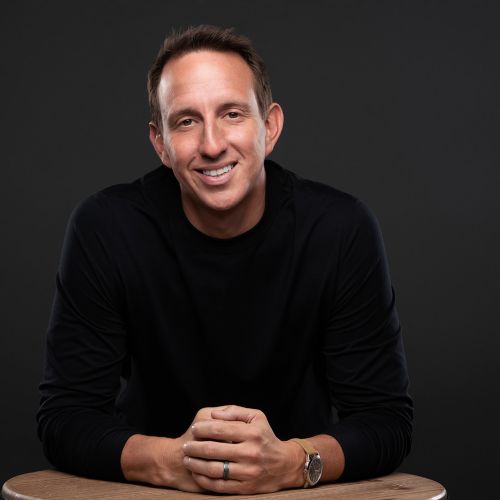
Chris Gerbig, Co-Founder & President, Pink Lily
Businesses can effectively leverage media and publicity to enhance their brand awareness through various tactics. One method is using press releases or media alerts to generate excitement and inform the audience about what’s in store Another avenue involves direct outreach efforts with reputable publications to secure news features, providing insight into the business’s origins and values. A recommendation to leverage earned media is to add a “Press Page” to the company’s website or even publish a post on social media touting the win. Furthermore, utilizing a company’s founders and thought leaders to speak on pertinent topics at industry-related panels or on podcasts can further position the business as an industry authority. Lastly, during times of crisis, having PR firms on board can aid in effective crisis management, mitigating negative social media sentiment or addressing unfavorable publicity.
At Pink Lily, we implement several strategies to harness the power of media and publicity for our brand. One key approach is utilizing social media to announce the introduction of new product lines, upcoming sales, and promotions to create anticipation among our audience and broaden our brand’s reach. We’ve also actively pursued recognition by engaging PR firms to submit applications on our behalf for prestigious awards. Our inclusion in the Inc. 5000 list has amplified our credibility and standing within the industry. On my business website, I leverage earned media by linking to articles in which the brand has been featured. Lastly, we have a crisis management strategy in place, facilitated by PR experts, to swiftly address and manage any negative publicity or social media crises that may arise, ensuring our brand’s reputation remains intact.
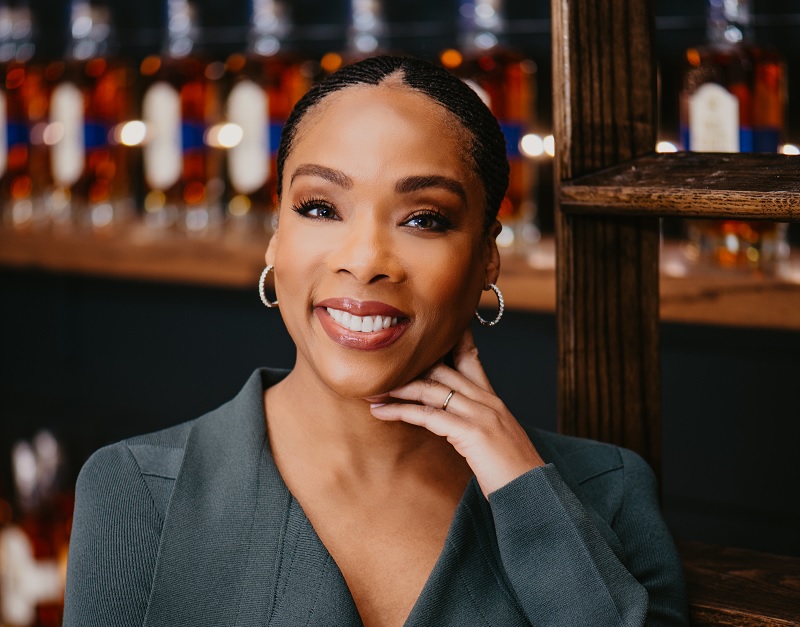
Fawn Weaver, CEO & Founder, Uncle Nearest Premium Whiskey
For a small business, media and publicity are invaluable tools for sharing your company’s brand story. Unlike larger corporations with detached PR departments, founders possess an innate passion for their creation. Consumers yearn for dynamic founders with inspiring brand narratives, whether through articles, morning news shows, or podcasts. The role of the press isn’t to narrate your story; it’s to optimize viewership, readership, and listenership. As a founder, your task is to offer engaging stories that align with audience interests, fostering a win-win situation for both you and the press.
I meticulously outline a press strategy a year ahead, focusing on angles that captivate the public’s interest. I often tie significant goals to press releases, ensuring these objectives resonate with viewers, listeners, and readers. With the groundwork already laid, my team transforms these goals into realities. For instance, our most impactful news story—surpassing $100 million in sales—was developed six months prior to its achievement. This proactive approach primes our PR team to pitch effectively when the time comes.
Earned media steers our company’s marketing endeavors. Our campaigns hinge on robust PR strategies. If the media aspect isn’t compelling enough, we reevaluate the campaign’s viability. In a market dominated by spirits conglomerates worth billions, I forgo competing in sheer marketing spending. Instead, I focus on diligently crafting narratives and nurturing media relationships that level the playing field. Despite limited budgets compared to giants, we effectively reach our target consumers through authentic stories.



